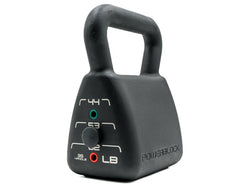More and more people are discovering you don’t need a gym for a good strength workout. Weightlifting at home can save time and money, give you privacy and let you exercise when it’s convenient for your schedule — even if it means you’re getting curls in at 3 AM. It’s also helpful for home gym beginners who want to learn how to start lifting weights without the guidance of a trainer.
Still, just like at a gym, you need to go about home weight-lifting the right way to ensure success. Whether you’re new to strength training or a veteran bodybuilder, use the 9 simple steps listed below to learn how to lift weights at home and get the best possible outcomes.
Step One: Make a Plan
The key to every fitness program is a good plan. Decide what your goals are, how often you want to work out and what exercises will help you meet those goals. If you’re learning how to start lifting weights as a complete beginner, you might want to consult with your doctor or a personal trainer before you start.
Step Two: Claim Your Space
The right setting for a workout isn’t going to be the same for everyone. Some people are going to like being in a room filled with potted plants so they can pretend they’re lifting in the jungle. Some people are going to like the lights bright — or dimmed — or blue! Long story short: create a space that feels energizing without forgetting your safety needs. Set up a workout area where you have space to move and that lets you focus. Avoid carpeted areas as these can cause strain on the lower extremities. You might also consider an exercise mat to protect the floor and increase comfort
Step Three: Get Equipped (Before You Get Ripped)
Home gym weights should let you comfortably do the exercises you want. PowerBlock adjustable dumbbells and PowerBlock adjustable kettlebells have a versatile ergonomic design and take up much less space than regular weights. You might also consider barbells or a workout bench if you want more lifting options.

Step Four: Suit Up for Success
You wouldn’t wear blue jeans or a ball gown to the gym — why wear them to work out at home? Instead, pick workout gear that provides support, allows movement and is breathable for when you start sweating. You also should wear sneakers to help with traction and stability.
Step Five: Turn Up the Heat With Your Warm-Up
You should always do a warm-up before starting a workout. This will increase joint flexibility, activate muscles and increase blood flow to prepare for more strenuous lifting. A few minutes of dynamic stretches, light exercise, cardio or foam rolling are all great warm-up options. Remember that a great warm-up is the spark you need for a fiery workout.
Step Six: Blast Off with Bodyweight
All strength building program beginners — even those mainly interested in weight lifting — should start with bodyweight exercises. This lets you start building strength while evaluating your body mechanics and movement. You’ll also improve stability and balance, creating a better foundation on which to add weights later.
Step Seven: Just Add Dumbbells
Now it’s time to start lifting proper weights. Adjustable dumbbells are ideal, because you’ll be able to increase your weight without buying more weights. For true beginners, the Sport 24 is a great model. For more experienced athletes who might progress more quickly in their strength building journey, you can’t beat the Pro 100. You can start small, but work up to 100 pounds per dumbbell, at gradual increments. Start out at a lower weight that you can perform 10-15 reps with, while using good form. Rest for a minute between sets. Work from one to two sets of 10-15 reps, then add a third set. Once you can easily accomplish three sets, with proper form, you can start to increase your weight. PowerBlock dumbbells increase increments from 2.5–5 lbs.
Step Eight: Finesse Your Form
Health and wellness expert Chris Divecchio notes that bad technique is one of the leading causes of workout injuries. When you repeatedly do an action incorrectly, it creates a lot of extra stress that eventually leads to muscle and joint breakdowns. Just remember it’s better to do an exercise right than to do it fast. Don’t lose your gains by rushing, boost them by finessing the form.
Step Nine: Never, Ever, Ever Skip the Cooldown
The time right after the workout is just as important as the workout itself. Doing some static stretches or another cooldown routine will relax the muscles, reduce lactic acid build-up and ease your body down to its pre-workout vitals. All three things help with recovery and injury prevention.
When it comes to figuring out how to successfully lift weights at home, the best place to start is going to be your gear. At PowerBlock, we’re here to help you create customized workouts that have you feeling — and lifting — your best without having to leave the comfort of home. Check out our collection of dumbbells designed to make true full-body strength building easier than ever.























